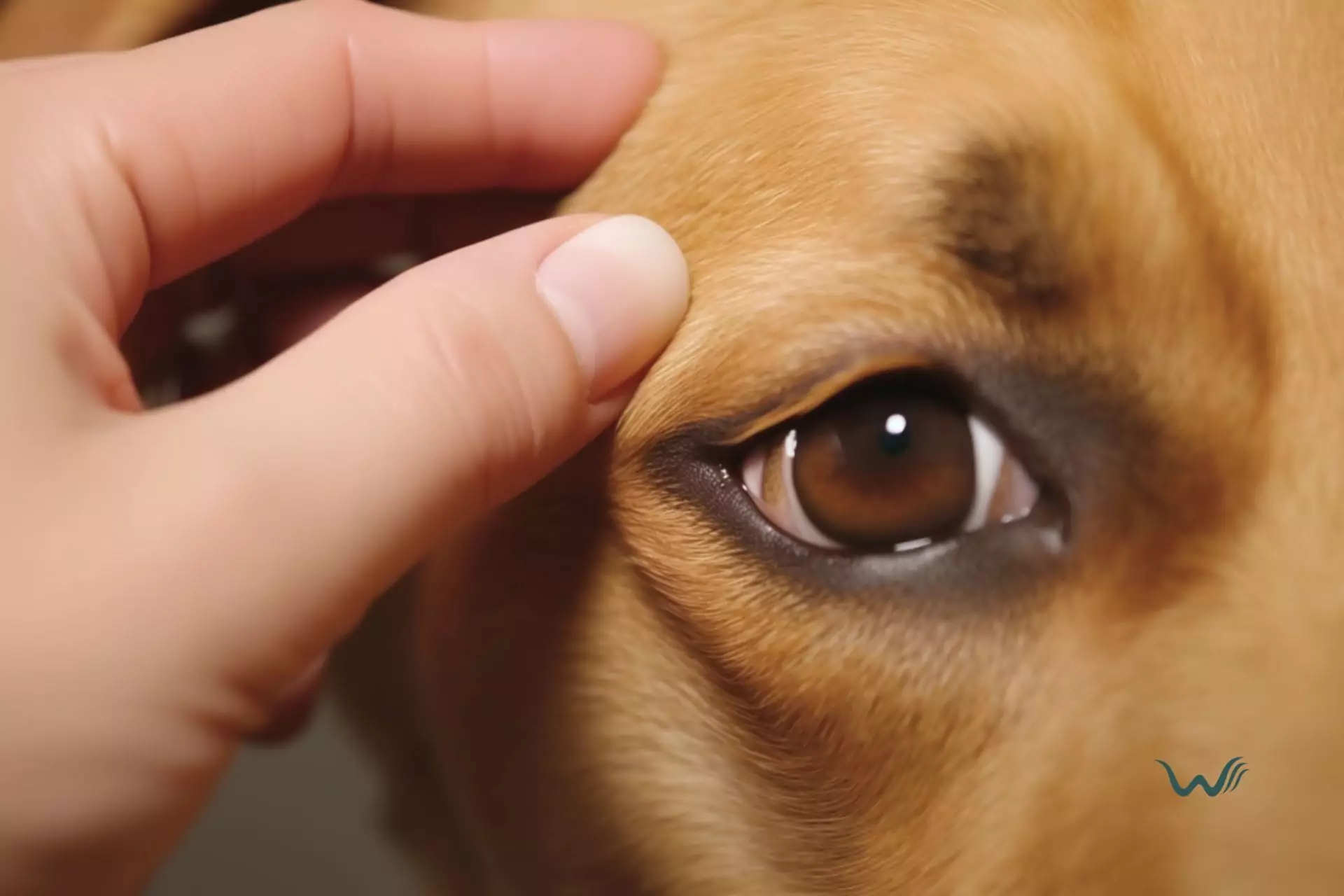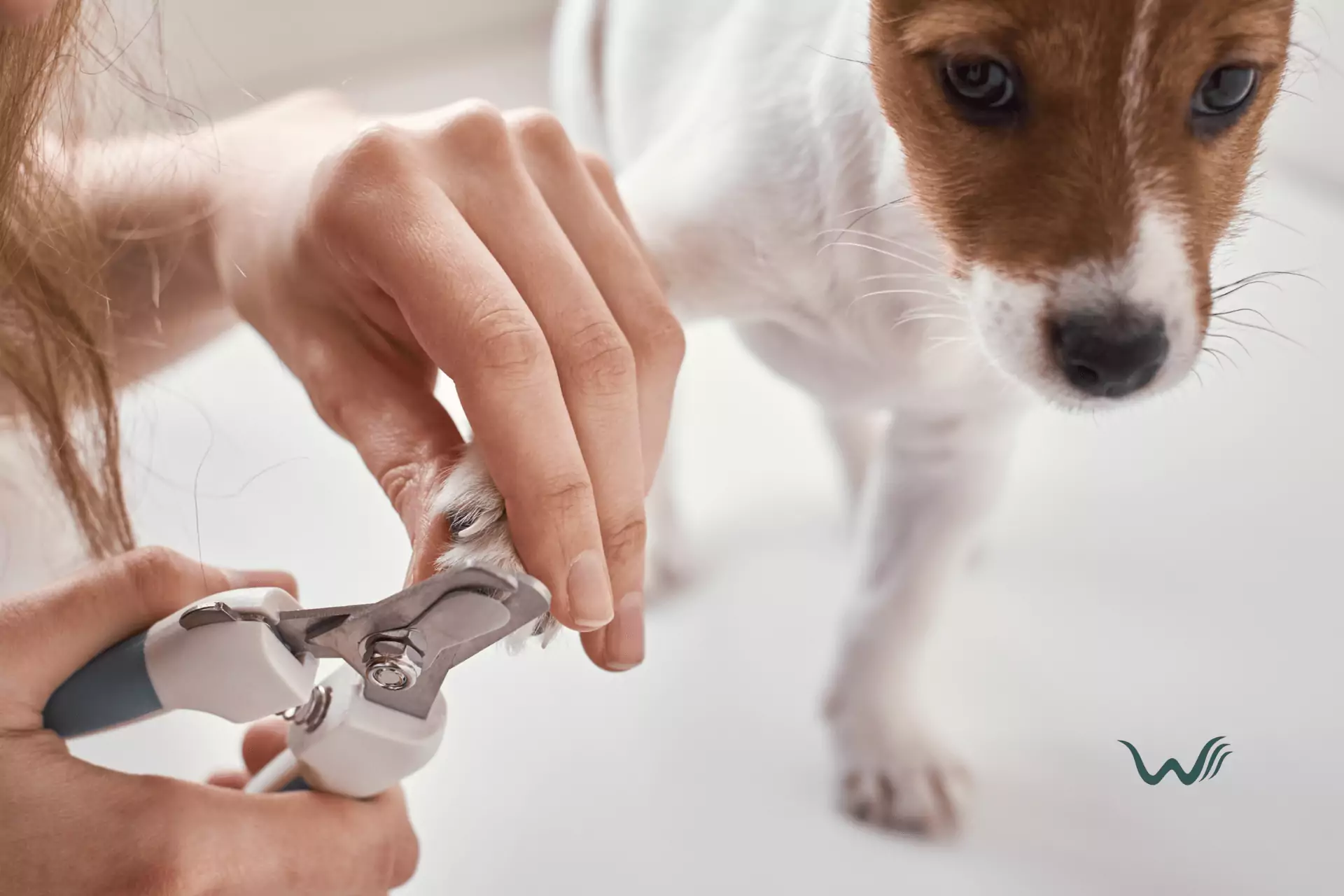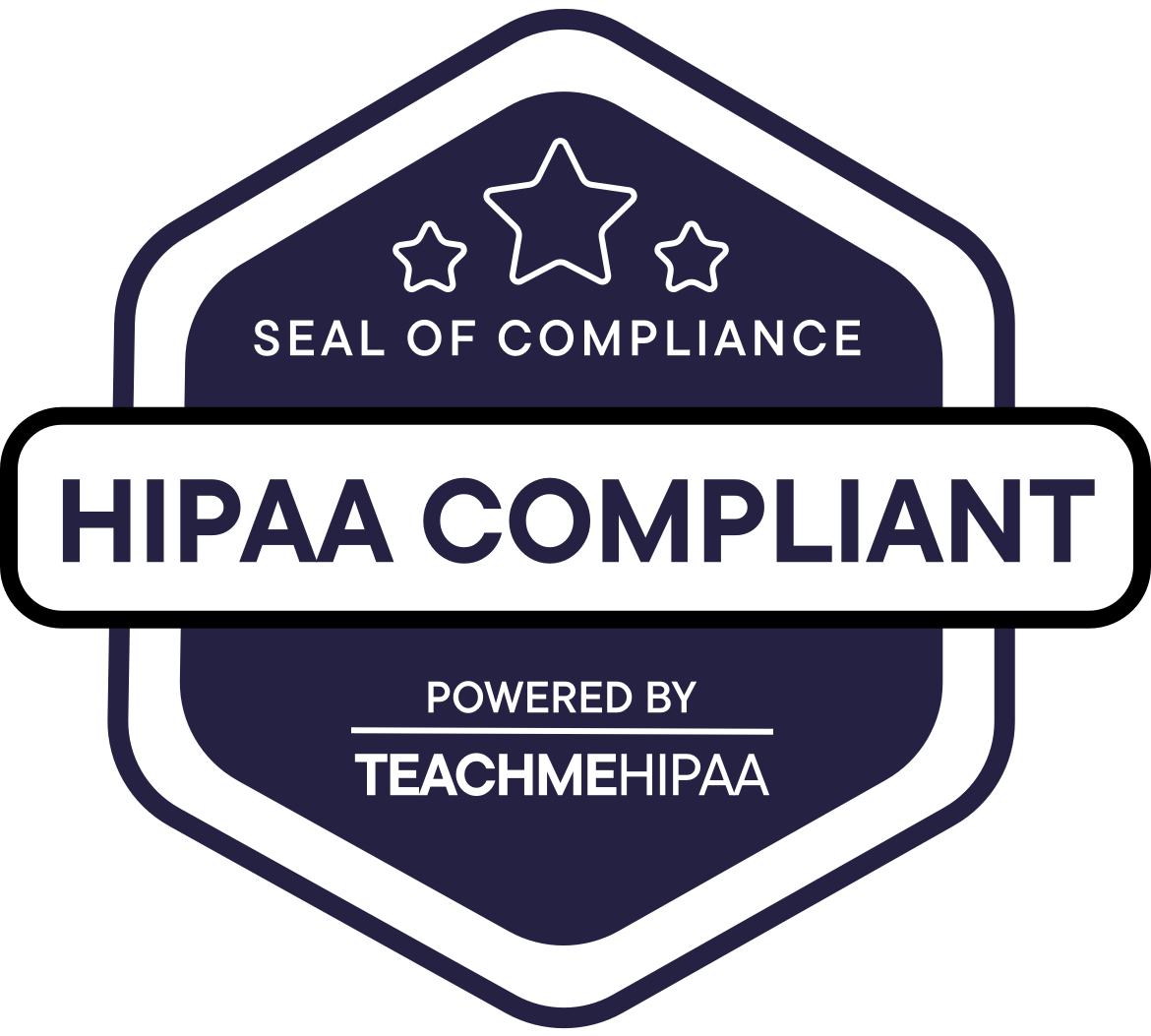

What Is The Best Way To Treat A Dog Stye?
by Haley Mills
Last updated: July 25, 2025
Verified and Approved by:
Angela Morris,
MSW, LCSW
Fact Checked

Have you noticed a small, red bump on your furry friend’s eyelid? It could be a dog stye. Similar to human styes, dog styes are a common condition that can cause discomfort and irritation for your canine companion. If you’re wondering what the best way to treat a dog stye is, you’ve come to the right place. In this article, we will explore the symptoms of a dog stye, discuss effective treatment methods, and provide tips on preventing future occurrences.
When it comes to treating a dog stye, it’s crucial first to identify the symptoms. Keep an eye out for a red bump or swelling on your dog’s eyelid, which may be accompanied by discharge or excessive tearing. Your dog may also show signs of discomfort, such as rubbing or pawing at their eye. Once you have confirmed that your dog has a stye, several treatment options are available. From gentle cleaning and warm compresses to natural remedies and seeking veterinary care for severe cases, we will explore the best ways to alleviate your dog’s discomfort and promote healing. Stay tuned to discover the most effective methods for treating a dog stye and ensuring your furry friend’s eye health.
Identifying the Symptoms of a Dog Stye
The best way to identify the symptoms of a dog stye is by closely examining the affected eye and looking for signs of redness, swelling, and discharge. A dog stye, also known as a hordeolum, is a small, painful bump that develops on the eyelid. When a stye occurs, the affected area may become red and swollen, and there may be a discharge or crust forming around the eyelid. The dog may also show signs of discomfort or irritation, such as excessive blinking or pawing at the affected eye. It is important to note that these symptoms can also be indicative of other eye conditions, so it is best to consult with a veterinarian for a proper diagnosis.
In order to identify a dog stye, gently lift the dog’s eyelid and examine the affected area closely. The stye will typically appear as a small, red bump on the eyelid, similar to a pimple. It may be filled with pus or fluid, and there may be a small amount of discharge present. The surrounding area may be swollen and inflamed, and the dog may show signs of discomfort or pain when the area is touched. It is vital to be gentle when examining the eye, as excessive pressure or rough handling can cause further irritation or injury.
Consider Possible Environmental Triggers
Sometimes, styes can appear or keep coming back due to something in your dog’s environment. For example, a new pet shampoo or household cleaner might be irritating your dog’s eyes. Try to think back to when the problem first started or if it seems to flare up after certain activities—this can offer valuable clues about what’s causing the symptoms. If you notice a pattern, consider switching to hypoallergenic products and minimizing your dog’s exposure to potential irritants.
Preventing Further Irritation
Dogs are notorious for wanting to scratch or rub at anything that bothers them, and a stye is no exception. If your pup can’t seem to leave their eye alone, you may need to use an Elizabethan collar (often called a “cone of shame”) to prevent further rubbing or scratching. This simple step can make a big difference in avoiding additional irritation and giving the stye a chance to heal.
Gentle Cleaning and Warm Compresses
To effectively address a dog stye, start by gently cleaning the affected area and applying warm compresses. It is essential to clean the area around the stye to prevent any further infection or irritation. Use a clean, damp cloth or a cotton ball soaked in warm water to gently wipe away any discharge or crust that may have formed around the stye. Be careful not to rub or irritate the stye, as this can cause more discomfort for your dog.
After cleaning the area, applying warm compresses can help soothe the stye and promote healing. Soak a clean cloth or cotton ball in warm water and gently press it against the stye for a few minutes. The warmth from the compress can help increase blood circulation to the area, which can aid in reducing inflammation and promoting drainage. Make sure the compress is not too hot to avoid burning your dog’s skin.
Managing Your Dog’s Discomfort and Anxiety
Alongside physical symptoms, it’s common for dogs with styes to experience anxiety or pain due to the irritation around their eye. If you notice your pup acting more restless, sensitive, or distressed than usual, consider simple ways to help them relax while the stye heals. Some dogs benefit from a quiet, cozy space away from household commotion, while others may find comfort in gentle petting or calming routines.
Natural anxiety aids, such as calming treats or CBD products formulated for pets, can provide additional relief. Always choose a product appropriate for your dog’s size and consult your veterinarian before introducing new supplements, especially if your dog is already on medication or has underlying health conditions.
Owner Safety and Comfort
When treating a stye, remember that dogs, like people, can be sensitive about anything coming close to their eyes. Some pups may squirm or try to pull away, and a nervous or uncomfortable dog could react unpredictably. For everyone’s safety, consider enlisting a helper to gently hold your dog steady, or wait until your dog is relaxed—perhaps after a walk or some playtime—before attempting any cleaning or compresses. In certain situations, using a soft muzzle can help prevent accidental nips, especially if your dog is prone to anxiety during handling.
Wearing disposable gloves while cleaning your dog’s eye is a good precaution. Gloves help prevent the spread of bacteria from the stye to your hands, and also protect your dog from any germs you might have on your skin. Even with gloves, washing your hands thoroughly before and after treatment adds an extra layer of protection.
Maintaining a Clean Environment
Be sure to keep your dog’s eyes clean and free from any irritants. Avoid exposing your dog to dusty or dirty environments, and keep their bedding and living areas clean. If the stye does not improve or worsens despite these measures, it is important to consult with a veterinarian for further evaluation and treatment options.
Natural Remedies for Dog Styes
Try using natural remedies to help your furry friend find relief from their pesky eye bump. One option is to apply a warm chamomile tea bag to the stye. Chamomile has natural anti-inflammatory properties that can help reduce swelling and soothe the area. Simply brew a cup of chamomile tea, let it cool, and then place the tea bag on your dog’s stye for a few minutes. Another natural remedy is to use a saline solution to clean the stye. Mix a teaspoon of salt with a cup of warm water and gently wipe the area with a clean cloth or cotton ball soaked in the solution. This can help keep the stye clean and prevent infection.
In addition to chamomile and saline solution, you can also try using aloe vera gel. Aloe vera has soothing and cooling properties that can help alleviate discomfort and promote healing. Simply apply a small amount of aloe vera gel to the stye a few times a day. Another natural remedy is to use a warm compress made with green tea. Green tea contains antioxidants and can help reduce inflammation. Brew a cup of green tea, let it cool, and then soak a clean cloth in the tea. Apply the warm compress to your dog’s stye for a few minutes several times a day. These natural remedies can be used in conjunction with gentle cleaning and warm compresses to help treat your dog’s stye.
Seeking Veterinary Care for Severe Cases
If your dog’s stye is severe, seeking veterinary care is crucial for proper treatment. While natural remedies and home care may be effective for mild cases, severe styes require professional attention. A veterinarian will be able to properly diagnose the stye and determine the best course of treatment. They may prescribe medication such as antibiotics or eye drops to help reduce inflammation and fight off any infection. Additionally, they can provide guidance on how to properly clean and care for the affected area to prevent further complications.
Veterinarians often use medicated eye washes or ointments to address bacterial infections. These are typically easy to apply—just tilt your dog’s head up, gently pull down the eyelid, and let the medication drip in. In some cases, an oral antibiotic may be prescribed, and these are often simple to give by hiding them in your dog’s food. For dogs with recurring or particularly inflamed styes, your vet might recommend cortisone to help reduce swelling and promote healing.
When Professional Removal Is Needed
In most cases, a dog stye will resolve with diligent home care, but if it worsens or begins to interfere with your dog’s vision or daily comfort, your vet may recommend removing the stye manually. This is typically done if the stye is particularly stubborn or is causing significant irritation. The procedure is performed under anesthesia to keep your dog calm and pain-free. Using sterile instruments—usually a needle or scalpel—the veterinarian will gently open the stye so that the infection can drain. This quick intervention can relieve discomfort and promote faster healing.
After the procedure, your vet may recommend keeping the area clean with a basic saline eye wash or a solution suitable for pets, similar to those used for contact lenses. You’ll also receive detailed instructions for post-operative care, including any necessary medications and guidance on follow-up appointments. This hands-on veterinary approach helps ensure your dog’s eye heals properly and reduces the risk of further complications.
It is important to remember that seeking veterinary care for severe cases of dog styes is essential for the well-being of your pet. A veterinarian will have the expertise and resources to provide the most effective treatment and ensure a full recovery.
Is the Treatment for a Dog Stye Similar to Treating an Eye Infection in Dogs and Cats?
Yes, the treatment for a dog stye is similar to treating an eye infection in dogs and cats. A veterinarian will typically prescribe eye infection treatment for pets, which may include antibiotic ointments or drops to help clear up the infection. It’s important to follow the vet’s instructions for administering the treatment.
Preventing Future Dog Styes
Make sure you take preventative measures to keep your furry friend’s eyes clean and healthy. One of the most important things you can do is to clean your dog’s eyes regularly. Use a clean, damp cloth or a saline solution specifically made for dogs to gently wipe away any debris or discharge that may accumulate around the eyes. Be sure to be gentle and avoid putting too much pressure on the eye. Additionally, please keep your dog’s face hair trimmed to prevent it from irritating the eyes and causing a stye. Regular grooming and trimming can help keep the area around the eyes clean and reduce the risk of styes.
Regular eye cleaning, paired with quality eye care products, can go a long way in preventing the recurrence of styes or other eye issues in your dog.
Another preventative measure is to regularly check your dog’s eyes for any signs of infection or irritation. Look out for redness, swelling, discharge, or any changes in your dog’s behavior, such as excessive rubbing or pawing at the eyes. If you notice any of these symptoms, it’s important to seek veterinary care as soon as possible. Your vet can examine your dog’s eyes and provide appropriate treatment to prevent a stye from developing. Additionally, make sure your dog’s living environment is clean and free from any potential irritants or allergens that could cause eye irritation. Keeping your dog’s bedding, toys, and living area clean and dust-free can help prevent styes and other eye infections. By taking these preventative measures, you can help keep your dog’s eyes healthy and minimize the risk of future styes.
If you’re noticing a pattern with your dog’s styes, such as flare-ups after using a certain grooming product, exposure to pollen, or changes in household cleaners, consider swapping out those products or limiting exposure. Sometimes, pinpointing the source of irritation can make all the difference in keeping those troublesome bumps at bay.
Frequently Asked Questions
Can a dog stye be contagious to humans or other animals?
Yes, a dog stye can be contagious to humans and other animals. It is caused by a bacterial infection and can easily spread through direct contact or sharing of items like towels or toys.
Are there any over-the-counter medications that can be used to treat a dog stye?
There are no over-the-counter medications specifically designed to treat a dog stye. It is best to consult a veterinarian who can recommend appropriate treatment options for your dog’s condition.
Can a dog stye cause permanent damage to the dog’s eye?
Yes, a dog stye can potentially cause permanent damage to the dog’s eye if left untreated. It is important to seek veterinary care to diagnose and treat the stye to avoid complications properly.
How long does it usually take for a dog stye to heal on its own?
On average, a dog stye takes about 1 to 2 weeks to heal on its own. However, it is important to monitor the stye closely and consult a veterinarian if it persists or worsens.
Are there any specific breeds of dogs that are more prone to developing styes?
Some dog breeds may be more prone to developing styes than others due to their unique eye anatomy. However, proper eye hygiene and regular vet check-ups can help prevent and manage styes in all breeds.
Certify Your Emotional Support Animal Today

Why You Can Rely on Us?
At Wellness Wag, we believe your pet deserves care rooted in both science and compassion. Each article is carefully researched, written in clear language for pet owners, and then reviewed by qualified professionals to ensure the information is evidence-based, current, and practical for real-life care. Our goal is to help you feel confident in making informed decisions about your pet’s health and well-being.
Reviewed by
Angela Morris, MSW, LCSW
Angela is a licensed clinical social worker with 20 years of experience in patient advocacy and community mental health. She has assisted numerous clients with ESA evaluations and brings a deep understanding of disability accommodations, ensuring that all information is accurate, supportive, and practical.

Written by :
Haley Mills
Last Updated :
July 25, 2025












